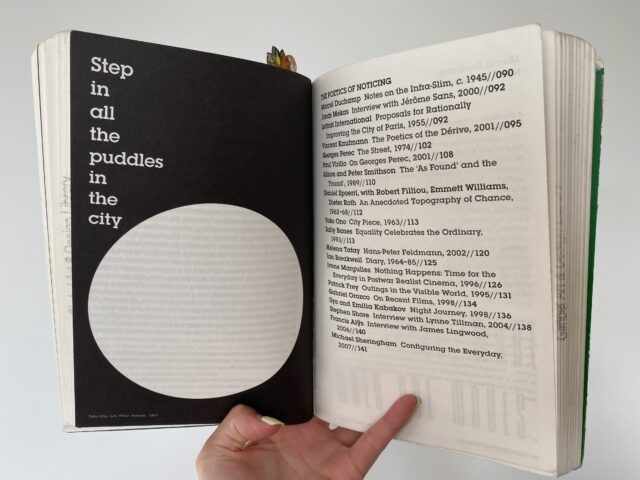
As I continued into the summer with my research, I was hoping to land on a clearer direction and in particular, a solid definition of place to stand on. The problems started here. What is place? I found that the more I read, the harder it was to define. Are place and space interchangeable terms? Is place always subjective? Geographer Tuan Yi-Fu, in one definition, calls place a pause in time and space, in another an attachment formed as a function of time, and in yet another, as time made visible. I became lost quite quickly among these very poetic essays.
Through a well-timed conversation with a school librarian, I realized that a common thread among the places that I’m attracted to is their “everydayness.” As George Perec wrote in Species of Spaces, “The banal, the quotidian, the obvious, the common, the ordinary, the infra-ordinary, the background noise, the habitual? […] How are we to speak of these common things, how to track them down, how to flush them out, wrest them from the dross in which they are mired, how to give them meaning, a tongue, to let them finally, speak of what it is, who we are.” This became the new compass for my research.

Looking at “the everyday” through an artistic interdisciplinary lens proved to be very revealing. Contemporary art that draws inspiration from the everyday comes from a long tradition of genre painting out of which we have practises like plein air painting and, (more familiar to my architecture sensibilities), urban sketching. In film, genres like “slice of life” are born in part out of the desire to capture this ordinariness we experience in our day-to-day. My aim is to examine this turn from the epic to the mundane in varying mediums and creative processes. I hope to build a body of creative references that will inform my own study of Flushing, Queens. The hope is that I can continue to use art to find beauty in what is often leftover, ignored, or perhaps just too familiar.
